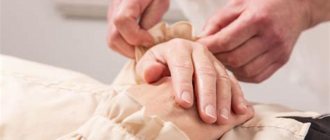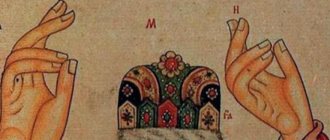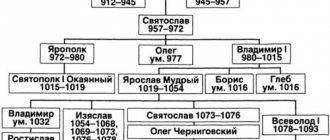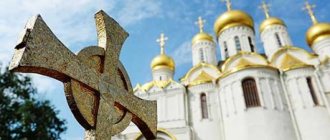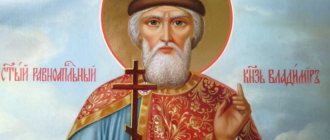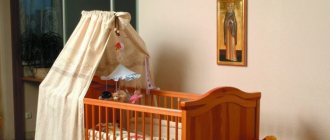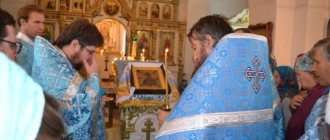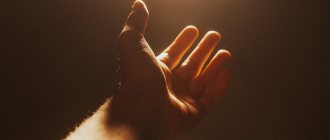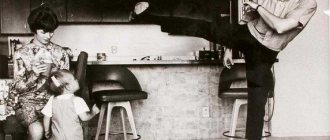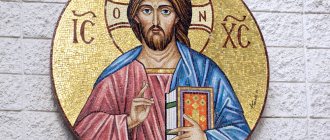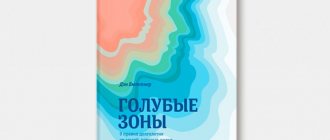The paint on the background of a correct icon must lie lightly, and the icon itself must be transparent and multi-layered. You can see such transparent colors on magnificent ancient icons. Thanks to them, the artistic composition literally comes to life. As a result, the faces of the Saints really look at us, as if from real windows into the Divine world.
There are various options for applying paint. So, for example, if the icon is large, then it is rational to use large brushes, in turn, for medium and smaller brushes - small ones are the best option. The finished paint is diluted with water to a liquid, after which it is applied transparently, like watercolor, in layers. It is worth noting that squirrel, kolinsky, fan and bristle brushes are mainly used for icon painting.
Reveal
“Reveal” the icon – this is what icon painters say when they fill in a pre-prepared drawing with paints. Please note that this stage of work is typical for traditional icon painting; you will not find it in academic painting. Pure local colors are used in icon painting. Moreover, each of them carries its own semantic load, which reveals the essence of the subject. To get the right color, most often it is necessary to combine several paints. It is quite difficult to “arrange” local colors so as to create a harmonious coloring of the icon. The basic principle of their application is that each new color should be in harmony with those that have already been applied to the icon.
The Lord leads by the hand
The still unfinished but cozy room of the icon-painting workshop is spacious and light, on the table there are unfinished works, jars of paints, brushes in tall glasses, next to the windows there are several two-meter-long sketches drawn on paper. Now Natalya Andreevna is working on several icons at the same time. Arriving at the workshop, I caught myself thinking that what amazes me most of all is the amazing silence here. Silence filled with light, soft, prayerful, reverent.
Fourteen years ago, Natalya Gorbacheva decided to dedicate her talents to God. Since childhood, I dreamed of becoming an artist and loved to draw portraits. Then I wanted to become a fashion designer, but my girlish plans were cut short in the nineties, when life rapidly changed, and I had to think about how and what to live on. And let’s talk about studying to be an artist at the St. Petersburg Academy of Arts. I.E. Repin, there was no question. On the advice of her parents, Natalya entered the Saratov Polytechnic University to become an architect.
Once, during one of the lectures on art history, students were shown an image of the Holy Trinity by the Rev. Andrei Rublev, and the girl gasped: “A masterpiece.” All the lines seemed so harmonious to Natalya that she wanted to write something similar herself.
However, a conscious faith in God in her life arose several years later and, as is now clear to her, was reflected in her creative self-determination. Like many, through personal sorrows and tragedies, the knowledge of the existence of God was reborn into a desire for Him. Like many people, it was not immediately possible to choose the only right path. I had to overcome a lot in order to one day end up in St. Nicholas Monastery and hear the main words about the meaning of my life. “You must serve God with what you have been given, don’t worry, you will draw,” the priest told her then, and Natalia came to the understanding that she needed to attend services and pray in the morning and evening at home. She did not at all want to design buildings and make decorative things that were intended only to decorate human life. She no longer saw any point in this.
Something happened not only inside, but also externally, the world around Natalya began to change. She had the feeling that she was ready to start writing, although she did not have specialized books or manuals, and even more so there was nowhere to study - there are no icon painting schools in our region. Where to begin? Time has answered all these questions. Everything turned out in some incredible way. But believers know: this is what happens when the Lord leads you by the hand.
Registration of the predominant part
It is customary to call “Preliminary Part” everything that is written down to the hands and feet of saints (architecture, landscape, etc.). This stage is based on the technique of gradual lightening. The master applies the first color with a wide brush, then the second color with a thinner brush, and the third color, in turn, occupies a very small area. It is applied with a thin brush on top of already completed layers.
Natural minerals used in icon painting are not all suitable for three-fold dilution with white. This is due to the fact that some of them have their own transparent structure. In this situation, highlights are applied with clean and undiluted white: first more liquid, then thicker. If desired, you can transparently paint a layer of the main color between layers. Such paints darken greatly. In addition, they do not appear immediately, but within about a day.
Cutting clothes to perfection
Approximately in the 16th century, the registration of clothes “under the feather” with created gold began to appear on icons. Such elements indicate the divine origin of the clothes. Registration "under the pen" is carried out in three stages. At the beginning, with a wide brush, general folds are drawn in stripes in areas of highlighting. Next, using a smaller brush, they are divided into “subfolds”. Finally, with a very thin brush, a marking is applied along the edges of the “subfolds,” which gives the folds a rigid contour. Additionally, the necessary accents are placed at the end. To give the folds the desired shine, the created gold is carefully polished with a “tooth”.
LiveInternetLiveInternet
Quote from the message Born_Spring
Read in full In your quotation book or community!
DRAW ICONS FOR PAINTING.
About how to use icon drawing. The word “template” does not apply to icons. I hope it will help and inspire many to create family heirlooms that will be passed down from generation to generation. Just in case, I would like to emphasize that if you want to create a “strong” icon, you need to: fast, confess, read a special prayer, take a blessing from the Father before starting work.
Our Lady of Arapet (Arabia)
Catalog of the collection of icon drawings https://nesusvet.narod.ru/ico/icons/cat_pr.htm
https://www.ikonsmaster.narod.ru/ob_ikone/2_trud_ikonopisca/26.html
https://www.izograf.com.ua/prorisi2.html The icon painter does not have the right to paint icons according to his own understanding...... only saints painted like that.. Based on the existing drawings, he creates a copy of the image that was before... The work of an icon painter - removing the traces https://www.icon-art.info/book_contents.php?book_id=25& ;chap=15
Eagle Taurus and Leo in Christian iconography.
Shine the icon of the Mother of God
Vladimirskaya. with the image... THE LEAP OF A BABY.
Icon of the Mother of God of Korsun.
SAINT NICHOLAS I bring to your attention the color drawings of the nun Juliana in good resolution (high resolution).
Draw from the original icon painting of the Kiev Pechersk Lavra.
Korsun Icon of the Mother of God.
Light up “Leaping” icon
Our Lady of Tenderness
Our Lady of Tenderness
EMBROIDERY COSTUME FOR AN ICON. (My humble experience)
- I make tracings (tracing paper) from the icon myself, or the icon painter gives it to me. Naturally, without drawing the details of the baby’s face, arms, legs, only the contours. The contours of the details that will subsequently be cut out need to be drawn a little further away so that later the chasuble does not run over the icon and partially cover the face or hands, and if there is a slight shift, which, in principle, should not happen, but suddenly!, then It would be possible to edit the work. If the hole is slightly larger, it’s not scary, but when the chasuble overlaps those parts of the icon that should be open, then this is bad.
- I make color sketches (I started doing them recently, on the advice of teachers from Ubrus, and they are very helpful in my work). I decide in general terms on the material that I will use in my work. I lay out hundreds of bags of beads, stones, thread, rhinestones, decide what might be useful in my work and put them in a separate box. I remove the rest so it doesn’t confuse me. As for the colors used in the chasuble, of course, pearls and beads of pearl colors, from white to light beige (see photo 1) are very suitable. I embroidered chasubles and tried to exactly repeat the colors on the icon (see photos 2, 3), but it seems to me less successful. In addition, the color range of beads is still limited; it is not always possible to find what you need to satisfy both in size, quality, and color. It is best to use Czech beads, of course. And the smaller the better. I practically don’t use glass beads, they are rough, but I introduce a little cutting into embroidery.
- Hooping the fabric. This process is already known to us, I hoop it the way it was taught in Ubrus. Only I don’t have a web, so I work without it. If the surface is completely embroidered, then you can embroider on cotton fabric; if it is assumed that part of the fabric will be visible, then we take the top fabric as we need. There can be several fabrics, i.e. there is one background fabric, and another halo fabric is superimposed on it (sewn with small stitches) (see photo 4). Sometimes the surface looks more interesting if gold brocade is used as the top fabric; it gives an additional soft glow to the beads, and it looks beautiful if the chasuble is not sewn together, but with gaps in some places (see photo 5)
Yes, the length of the fabric should be greater than the perimeter of the icon, by the width of the icon board plus 5-7 centimeters for hems.
- I apply tracery to the hooped fabric using fabric tracing paper. I trace the line with a simple pencil, clarifying the lines (see photo 6)
- I begin to embroider from the contours of the maforia of the Mother of God, the clothing of the Child. I sew them up completely, then I embroider the halos (photo 7), the background (if it is embroidered), the frame and the inscriptions, I correct everything, and check it with tracing paper. I embroider as described in the Ubrus magazine; you probably all know how to sew on beads. I embroider and attach, and two, and one bead at a time.
The background can be left unsewn. (See photo 
Naturally, I use beaded needles and LL or reinforced threads. Match the color of the beads or background fabric. The threads can be lightly waxed.
- I glue the backside with flour paste without removing it from the hoop. Previously I glued it completely, now I glue the parts that will be cut out and the embroidered parts adjacent to them by about 1 cm.
- After drying, carefully using nail scissors and a sharp fabric ripper, I cut out the unsewn parts with an allowance of approximately 1 cm, if the fabric allows, and if the hole is small, then whatever happens. I cut the fabric so that it bends well and smoothly on the wrong side. I hem it to the wrong side, passing it two or even three times in a circle so that the fabric is well secured. You can glue the edges again.
- I remove the embroidery from the hoop. I attach it to the icon. To properly place the chasuble on the icon, you will need the help of double-sided tape. I like to work with linoleum tape. I glue tape to the back side of the icon board around the perimeter, and one by one removing the second paper layer from it, I wrap the fabric on the wrong side and glue it to the tape. If you need to correct it, you can peel it off and do it again, the tape sticks well. When I see that the result suits me, the fold is positioned correctly and does not move anywhere, I fix the corners and sew them with threads. I cut off the excess fabric on the wrong side.
- I cut out cotton fabric equal to the perimeter of the icon and sew it manually along the entire perimeter of the icon from the inside out to cover all the hems and seams so that everything is neat.
- I insert the icon into the icon case. Amen.
https://www.ubrus.ru/node/748?page=1
Lettering and strokes
These elements “assemble” the icon into a single composition. They complement and decorate the image, acting as its mandatory element. Previously, the inscription on the icon was carried out by the Banner (the best master). It also marked the icon. The inscription of the name of a saint can be compared to the naming of a baby. Previously, it was performed by the bishop. Today, this action has been replaced by the rite of illuminating the icon. Only after this the completed work turns into an icon. Now the Saint is looking at us from it, to whom we can and even need to pray.
Story
The first icons appeared back in the time of the apostles. The ancestor of icon painting is called the Evangelist Luke. It has received the greatest development in countries professing Orthodoxy. The main centers of icon painting include the following countries:
- Byzantine Empire;
- Kievan Rus and Muscovy;
- Bulgarian kingdom.
In the history of icon painting, there are several main stages, which are characterized by unique distinctive features in the manner of execution, composition and drawing of images.
Coating the icon with varnish for protection
The protective coating of the icon is the most difficult aspect. In ancient times, the icon was covered with special linseed oil. This method continues to be used today. Drying oil should be transparent and light. Its “rising” time is approximately 8 hours, and until it completely dries – a day. It is noteworthy that in the Palekh workshops there was a special room for covering paintings with drying oil. It was completely isolated from access by strangers. This prevented unnecessary movement of dust in the air.
The process of preparing to paint an icon is described in the article: Icon Painting Technology. Preparatory stages
Our workshop “Abramtsevo” produces: Iconostases for churches / Baroque iconostases / Bassmen iconostases / Tyablo iconostases / Marble iconostases / Straight iconostases
Service
During her obedience at the Holy Trinity Cathedral in Saratov, Natalya Gorbacheva began to take her first and very careful steps in icon painting. I often went to different churches, looked at the icons for a long time, looked closely, studied. With the blessing of her confessor, she was able to meet with young icon painters who came to the St. Nicholas Monastery from Moscow and learn the necessary skills. Then, on assignment, she painted the image of the prophet Daniel from the Novgorod icon. Not everything went smoothly; there were times of despondency. But one day became significant for her and dispelled all doubts. In the morning, a friend gave her a book about the famous icon painter Theophanes the Greek, and in the evening, having accidentally met a Moscow icon painter in a church, she received a gift of paints...
“In one breath I read “The Work of an Icon Painter” by nun Juliania (Sokolova), everything in the book was easy and simple. I was also surprised at how difficult it was for me to find educational materials on architecture,” recalls Natalya Andreevna.
Since then, she has managed to preserve and increase the knowledge she has acquired and continue to improve her skills in the best traditions of icon painting. The first icon that Natalya painted with the blessing of the rector of the cathedral, Father Pachomius (now the Bishop of Pokrovsky and Nikolaevsky), was the image of John the Baptist. “It was through the example of this icon that I had the feeling that the Lord was leading me and showing me how to paint. I still have this icon,” says the interlocutor.
Today in the Holy Trinity Cathedral of Pokrovsk (Engels) there are many icons painted by Natalya Gorbacheva. All analogue icons for the twelve feasts, images of St. Sergius of Radonezh and Seraphim of Sarov in the right chapel, St. Paisius the Holy Mountain and Silouan of Athos, passion-bearers Boris and Gleb in the left, large icons of the Trinity, the Intercession of the Most Holy Theotokos.
Natalya does not like to call her business a profession; in this case, this word seems too superficial to her. Painting icons is, first of all, a service; it cannot be treated differently. And in this sense, the work of life and life itself must be very closely connected.
